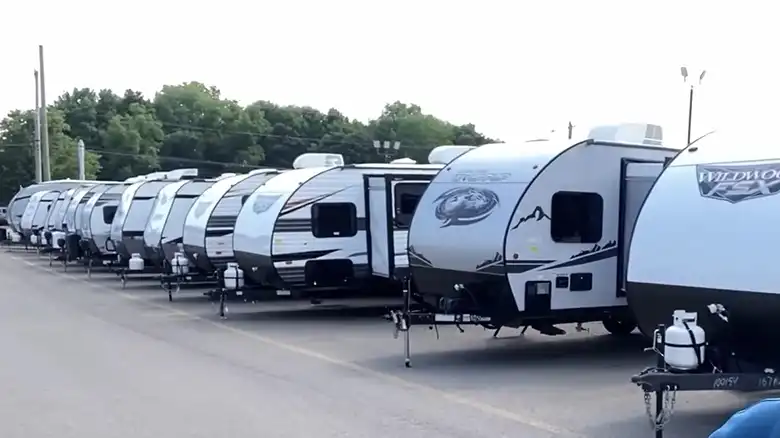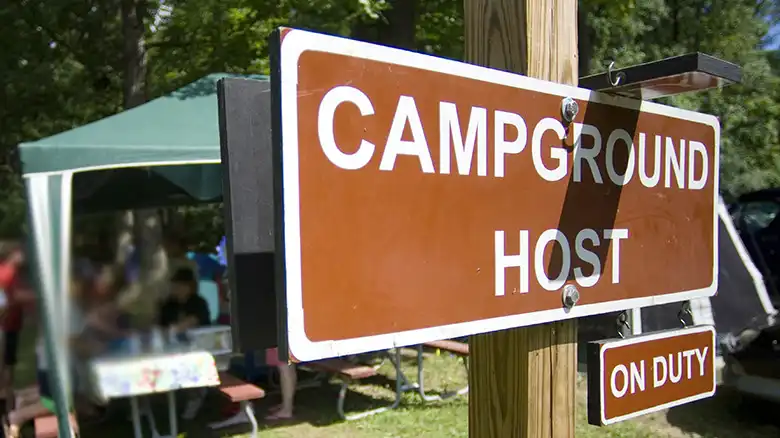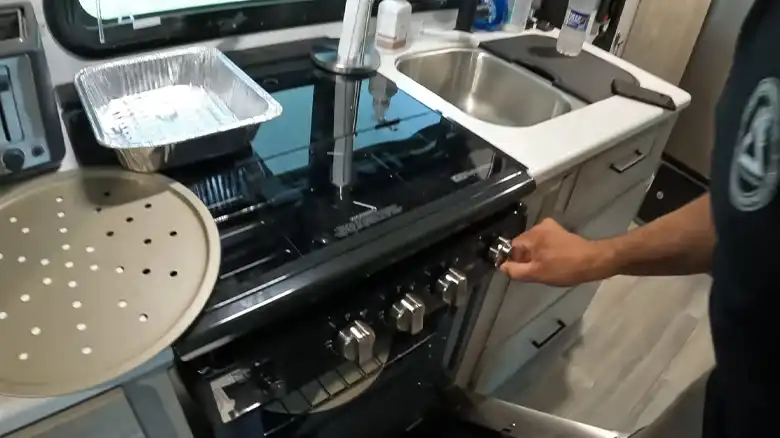Recreational vehicles aka RVs have exploded in popularity over recent years as more people embrace the allure of freedom and adventure on the open road. RV ownership now enables millions to travel in comfort while carrying along all the conveniences of home. With everything from compact trailers to lavish motorhomes on the market, RVs open up flexible travel opportunities ranging from weekend getaways to years-long overseas odysseys.
Yet with freedom comes responsibility. Beyond cost and driving skill, prospective RV owners often ponder — Do RVs break down a lot? It’s a valid question given these rolling homes pack in far more systems and complexities than everyday passenger cars. State by state, mile by endless mile, RVs endure grueling drives over varying terrain while expecting to function flawlessly as a hotel suite. It leaves even the savviest travelers wondering about reliability.
After a decade RVing across North America, through eternity hours piloting various rigs, I’ve gained first-hand wisdom into what makes an RV tick…and what makes them sometimes leave you ticked off and stranded! By analyzing real-world data, understanding key influencers, and embracing prudent preventative care, RVers can minimize unwanted breakdown disruptions.

Factors Influencing RV Reliability
Broadly stating that “RVs break down a lot” unfairly generalizes hundreds of models across many manufacturers, ages, operating contexts, and owners. As with cars or homes, regular inspection and maintenance are paramount for longevity and reliability. Let’s explore key factors that influence the frequency of RV repairs and roadside mishaps:
Comparing Different RV Types
Motorhomes – Integrated homes on truck or bus chassis range from compact Class B to massive Class A’s. More components and tighter chassis integration heighten complexity versus trailers.
Travel Trailers – Hitched behind vehicles, these provide living amenities at lighter weights and fewer systems than motorhomes. Fewer points of failure increase durability.
Fifth Wheels – Heavier trailers mated with pickup trucks via a mounted bed connection. Their weight distribution improves stability versus conventional hitches.
Popup Campers – Compact, collapsible options offer basic amenities with canvas tent-like sleeping quarters. Their simplicity makes them quite reliable.
Toy Haulers – Feature a ramp door and open garage space to transport motorcycles, ATVs, etc. The cargo weight and exposure to elements quickens wear.
In broad statistical surveys across all RV types, motorhomes consistently underperform travel trailers in reliability metrics like repair costs and frequency. The more feature-rich and mechanically integrated the RV, the more vulnerable it becomes it seems.
Age and Wear-and-Tear
Like any vehicle, RVs face gradual decline as components wear over years of vibration, weathering, and use. Time and mileage accumulate small deficiencies that ultimately cascade into major repair needs or failures:
Weathering degradation – UV damage, water incursion into openings
Vibration and shock loads – Frame/chassis cracking, fastener loosening
Water and moisture damage – Leaks, delamination, mold
Freezing damage – Cracked tanks/lines from frozen water
Fluid/filter neglect – Sludge buildup in engines, generators, tanks
Undetected leaks – Insulation/floor damage from plumbing leaks
Pest infestations – Mice/insect nests shorting electrical systems
Poor storage – Tire dry rot, battery failures, roof leaks
This slow entropy means even well-built RVs eventually show their age and decline in reliability over decades. New RVs under factory warranty unsurprisingly suffer fewer breakdowns than aging rigs exposed to years of harsh conditions and deferred repairs.
How Usage and Environment Shape Reliability
The towing or driving context also determines the strains, vibrations, and failures an RV endures. Light vacation usage differs vastly from extreme conditions faced by some full-timers:
a) Full-time usage piles on rapid mileage accumulation
b) Heavily loaded rigs accelerate wear on tires, suspensions, engines
c) Extended boondocking depends utterly on system reliability
d) Extreme weather stresses components beyond design limits
e) Rough roads rapidly shake loose seals, fittings, and fasteners
Carefree weekenders driving lightly packed RVs in fair weather will inevitably enjoy greater reliability than desert adventurers pushing systems to their survival limits while offline for months. The usage context matters tremendously.
The Role of Maintenance in Preventing Breakdowns
Perhaps above all, conscientious preventative maintenance drastically reduces mid-travel meltdowns. Replacing worn parts before failure, minding fluids, and spotting deterioration early prevent small issues from snowballing into major ones. Letting maintenance slide inevitably allows underlying problems to fester unattended until inevitably stranding you miles from help.
Ask any mechanic – negligence doubles repair bills! Lackadaisical owners pay dearly for ignoring basic upkeep that disciplined RVers perform religiously. Respect your investment’s maintenance needs, or suffer the expensive consequences!
Weighing Anecdotes and Statistics: How Often Do RV Breakdowns Actually Occur?
Beyond conceptual factors, what do real-world statistics and owner experiences reveal about RV breakdown frequency? Fortunately, aggregated data and crowdsourced anecdotes shine a light on the topic:
Statistical Look at Repair Costs
Insurance provider RVInsurance.com analyzed policy claim data from over 20,000 RVs to study real repair costs across various RV categories and ages. The results prove illuminating:
- The average repair cost averaged $667 across all RVs reporting claims
- Motorhomes reported highest average claims ($800)
- Travel trailers/5th wheels reported lower average claims ($650)
- Repair costs predictably increased with RV age
This aligns with expectations – motorhomes cost more to repair than trailers given their complexity. Costs also rise over time as RVs rack up mileage, wear, and weathering.
While insightful, this still doesn’t directly answer our key question about breakdown frequency. Are owners constantly battling issues, or do RVs provide relatively reliable transportation and lodging overall?
RV Reliability Surveys Point to…Yes Breakdowns Happen But Most Issues Are Minor
Seeking quantified reliability statistics with details on repair types, frequencies, and causes, I turned to the largest crowdsourced RV quality metrics database – RVsurvey. Drawing on thousands of owner surveys, it provides highly illuminating reliability metrics segmented across RV categories and brands.
Analyzing all self-reported data reveals a fairly sober reliability outlook:
- An average of 3-4 minor problems reported per RV in the first year
- 1 in 5 RVers experience a major issue disabling travel in the first year
- More than 50% of major issues trace to chassis, suspension, or axles
- 25% of first-year failures require weekplus in the shop – lost vacation!
- Motorhomes suffer considerably higher failure rates than towables
So while “constant breakdowns” prove overblown, even quality-built RVs face some degree of repairs – especially as they age. The bright spot lies in the majority of problems proving minor – slide rooms sticking, loose moldings, dead light bulbs, etc. Annoying yes – but these won’t leave you stranded without lodging overnight.
Even by conservative measures, around 20 percent of owners endure a debilitating failure annually. Typically rooted in mechanical systems, these can disrupt travel for days or weeks.
The takeaway? Budget for annoyances, but brace for an occasional whopper issue sidelining travel as well. Neither the rosiest nor direst outlooks precisely match reality.
How Do RV Breakdown Rates Compare to Other Vehicles?
To provide context around RV reliability expectations, it’s insightful to compare their repair records and lifespans versus other vehicles. Here’s how RVs size up:
RV Lifespans Approximate Those of Passenger Cars
Well-built RVs typically endure 10-20 years before requiring major renovations or deteriorating beyond practical use. This aligns with the average lifespans of passenger vehicles driven under normal conditions.
For example, a Consumer Reports analysis across makes/models found:
a) Properly maintained vehicles last 8-15 years before hitting the scrap yard
b) Regular oil changes, tune-ups, and belt/hose replacement stave off catastrophic failures
c) Suspension, transmission, and engine issues become unavoidable with extreme age/mileage
So reasonably maintained RVs meet or even exceed the practical lifespans of similarly utilized vehicles. Both succumb to extreme use and the unavoidable growth of mechanical defects over time.
RV Repair Statistics Align With Passenger Vehicles
Analyzing CarMD’s annual vehicle health reports provides another interesting comparison point. Tracking roughly 14 million registered “check engine” incidents across vehicles makes it a reliable data source.
Observing recent reports reveals a breakdown incident rate affecting around 8 percent of passenger vehicles annually. This aligns rather closely with the RV failure rates found in the crowdsourced RV survey mentioned earlier. So yet again, RVs exhibit a moderately higher but comparable failure profile to passenger vehicles.
The types of issues also run parallel – minor sensor/electrical glitches represent over half of incidents with more severe mechanical breakdowns rarer but still periodically occurring as equipment wears.
So while RVs cram in more features and complexity than everyday vehicles, their annual failure rates surprisingly align rather closely once factors like age and maintenance are normalized. Both succumb to wear, weather, and physics over time – regardless of vehicle type.
RV Travel Offers Advantages If Issues Arise
Importantly, RVs hold one critical advantage should problems occur – your hotel comes along for the ride! With living necessities ever-present, minor repairs prove less disruptive since you can usually occupy the RV while awaiting any service. Try pulling that off from a cramped rental car.
And even for major issues requiring intensive professional repair, families gain the flexibility to amend travel plans around shop delays. When your home rolls with you, alternatives like rental cars, hotels, and shifted destinations stay feasible short-term options.
Four Ways RV Owners Can Minimize Breakdowns
While occasional issues prove inevitable, prudent RV buyers and owners can stack the odds in their favor by making educated purchases, rigorously maintaining equipment, preparing contingency plans, and leveraging community wisdom.
Purchase a Robust, Pedigreed RV
Conduct due diligence upfront – While no RV model or brand holds a spotless record, intensive research during the buying process can reveal design eras and equipment with better reliability patterns. Most manufacturers have faced lawsuits around flaws while reengineering components in subsequent model years.
Study online forums, analyses by RV review associations, and detailed spec reports on RVnews.com before purchasing. Peruse consumer complaint bureaus to identify systemic issues called out across owners. Consider only current or recent model year units to benefit from the latest designs and materials.
Equally critical – hire a certified RV inspection service to objectively assess any pre-owned rig before purchase. Pay explicit attention to chassis wear, envelope moisture points, and hack repair jobs. Catch brewing problems before inheriting someone else’s shelter on wheels and its looming maintenance backlog!
Prioritize preventative gear – Specify features to safeguard reliability upfront:
a) Spare tire + associated mounts/hardware
b) Water filtration kit protecting plumbing
c) Generator + fuel stabilizer for power redundancy
d) Solar + batteries enable off-grid durability
e) Leveling systems prevent shifts from damaging equipment
f) Temperature/moisture sensors catch problems early
While adding cost, such technologies directly avoid myriad breakdown causes – well worth the upfront investment!
Preempt Problems Via Diligent Maintenance
Religiously adhering to all maintenance schedules and fluid flushes ranks among the most vital ways to avoid unexpected breakdowns or premature system failures. Consider adopting this vigorous multi-pronged maintenance regimen:
Follow factory intervals – At a minimum, perform all chassis, generator, roof, appliances, and component maintenance prescribed in owner manuals. Their engineers understand the intricate system interdependencies and maintenance needs far better than any owner can.
Enhance fluid maintenance – Flush all fluids (engine oil, coolants, transmission fluid, brake fluid, generator oil) at 25% shorter intervals than specified. The extra effort prevents particulate buildup-caused failures.
Annual preventative RV inspection – Invest in an inspection/service combo annually from a certified RV technician even for lightly used rigs Less than $1000 to potentially uncover brewing issues and prioritize repair budgets.
Monitor seals biannually – Walk the RV twice annually checking all sealing interfaces around fixtures, slide-outs, penetrations, doors/windows, etc. Remediate any observed drying, cracks, gaps, voids, or damage immediately before moisture ingress destroys interiors. Prevention is faster and cheaper!
Detail aggressively – Wash and wax the RV monthly along with inspecting/sealing the roof annually. Use protectants on rubber fixtures, tires, metals, and other materials vulnerable to environmental deterioration. Prevention preserves components!
Prepare Mentally and Physically for Roadside Issues
Hope for the best, yet prudently brace for breakdowns through contingency planning and onboard preparation. RV trip battle drills should include:
🌡️ Survive off-grid – Carry 2-3 weeks of medication, food staples, pet supplies, and drinking water allowing you to shelter in place comfortably during repairs.
🧰 Equip emergency toolkit – Stock sealants, lubricants, basic tools, fasteners, ties, glues, and misc. parts that temporarily revive failing fittings/fixtures as needed en route to true repairs. YouTube tutorials prove invaluable here!
✔️ Document key details – Catalog your RV’s VIN #, license plate, and exact specifications in your phone to supply repair shops quickly. Photograph all appliance model #’s and equipment placards should replacements become necessary.
📞 Verify coverage – Confirm applicable insurance/warranty coverage well beforehand across vehicle systems, personal belongings, etc. Understand exactly what reimbursements apply if faced with damage or failures.
☎️ Collect critical contacts – Save phone contacts for emergency services, RV/appliance manufacturers tech support, roadside assistance, etc for all locations visited. Don’t rely solely on cell coverage when stuck.
💸 Keep a repair fund – Set aside at least $3-5000 for unforeseen breakdown costs beyond insurance coverage. The fund saves you from desperate financial moves during untimely rig failures bound to occur eventually.
Connect with Fellow RVers – Wisdom Lies in Community
Facing mechanical adversity hundreds of miles from home can prove daunting if traveling solo. Luckily fellow travelers stand ready to assist – the RV community looks after its own!
🛣️ Leverage forums for advice – Thousands of veteran RV owners share maintenance advice and technical support online for all brands and issues imaginable. Post questions to tap guidance from those already experienced addressing that very same problem!
👨🔧 Find recommended repair shops – RVowner groups across platforms will eagerly suggest competent, cost-effective mobile techs and dealerships to tackle repairs on your particular rig type. roadtrippers.com also indexes top-rated RV service centers nationally.
🤝 Barter expertise – Having handled roof resealing, slideout tweaks, and similar issues myself, I take comfort in paying forward hard-earned lessons with fellow travelers I meet along my journey. A little generosity breeds lasting community.
Rallied alongside people passionate about the RVing lifestyle, troubles seem far less daunting. There’s comfort in not facing the mechanical unknown alone.
To Summarize…How Often Do RVs Break Down?
So do RVs break down constantly and strand owners alongside the road dreaming of motel rooms? Not exactly – but they do face moderate reliability challenges worth accepting. Well-used RVs average roughly one minor failure monthly with a more severe failure disabling travel one year in five across the data. Motorhomes predictably underperform lighter travel trailers in reliability metrics.
Yet preventative selection, rigorous maintenance, and contingency planning together help mitigate dreaded mid-journey failures. And even when stubborn breakdowns occur, the community stands ready to advise and assist so travelers don’t feel overwhelmed or helpless.
For RV dreamers still on the fence – don’t let perceived reliability fears deter your adventures. As the data and multitudes of journeyers demonstrate, RVs deliver years of rewarding travel despite requiring some mechanical patience and TLC along the winding roads ahead.
With education and grit, occasional nuisances simply become a gateway to mastering maintenance basics while forging lasting memories among new horizons. I’d endure the frustrations hundreds of times over for the privilege of counting sunsets from an ever-changing view through my RV’s window.
People Also Ask
What are the most likely causes of breakdowns in newer RVs?
In models less than 2-3 years old, most issues are traced to initial manufacturing defects missed in quality control. Faulty door sensors, slide-out hydraulics failures, and loose cabinetry all prove common but are resolvable via warranty service. Maintain vigilant inspections while under coverage.
Do pickup truck RVs like truck campers avoid reliability issues faced by larger motorhomes?
Generally yes – their lighter footprint and simplicity borrows the robustness of everyday pickup platforms. But slide-in campers risk corrosion from road moisture if seals fail. All face expected wear of generators, appliances, and waste systems needing diligent upkeep.
Which RV system causes the costliest breakdown repairs when they do occur?
The drivetrain proves most devastating – blown engines or transmissions can quickly exceed $5000+ and escalate rapidly. But suspension failures also run $2500+ in parts alone plus intensive shop labor fees. Both can crater budgets fast!
What percentage of RV owners face no major issues or breakdowns annually?
Per crowdsourced reliability data, a sizeable 35% of RV owners enjoy issue-free travels within the first year off the lot. However, that good fortune dwindles quickly – by year 5 less than 15% report zero major failures annually even with diligent maintenance.
Should breakdown risk alone discourage RV ownership?
Absolutely not – alongside prudent preventative care the RV lifestyle rewards adventurers richly between the wrenches! Anecdotal evidence overwhelmingly confirms most reflect fondly on trips despite scattered maintenance troubles. Let potential issues inspire mastering basic repair skills rather than torpedo dreams.


